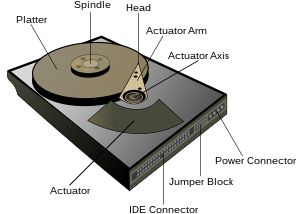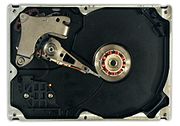SAN FRANCISCO, California-- In an industry dominated by men, leave it to women to come up with the winning idea in a contest to create a concept for a video game about losing one's virginity.

Two women won a contest this week to create a concept for a video game about losing one's virginity.
On Wednesday, at the Game Developers Conference here, the two-woman team of Heather Kelley and Erin Robinson won the Game Design Challenge with just 36 hours of preparation, while their competitors had weeks to come up with concepts for a game about "your first time."
This was the sixth straight year of the design challenge, hosted annually by New York-based game developer Eric Zimmerman. The contestants are generally top-tier game designers like two-time winner and Spore and The Sims creator Will Wright, Deus Ex lead designer Harvey Smith, or 2008 winner and Leather Goddesses of Phobos creator Steve Meretzsky.
The contestants are generally given several weeks to come up with a concept for a game based on some sort of unusual challenge posed by Zimmerman. Past themes have included a game about love, a game based on the poetry of Emily Dickinson, and a game that could win the Nobel Peace Prize.
"We are in a medium that is just incredibly plastic," Zimmerman said. "We can put anything up on the screen...Still, we find every year that most of the money being put into games is put into a relatively narrow (set of) genres" that tends to include monsters, dragons, and the like.
Zimmerman added that the purpose of the challenge is "to think about how we can create games that really break away" from what's been done so many times before.
Don't Miss Sex and autobiography have been constant themes in literature, film, and theater, Zimmerman argued, pointing to "Lolita," the work of Henry Miller, Chaim Potok's novel, "My name is Asher Lev," and the films of Fellini and Woody Allen.
But while Zimmerman touted the widespread historical acceptance of the theme of autobiographical sex, he noted with some dismay that veteran game designer Kim Swift, who works for Valve and who created the award-winning Portal, had originally been slated to be among the contestants but had eventually been pressured by Valve to withdraw due to the theme.
"I'm saying this as a fan of Valve," Zimmerman said, "but I do find it frustrating and disturbing that Kim would be pulled from the panel."
Still, he said, after word got around about Swift's withdrawal, Lapis designer Kelley and independent developer Robinson volunteered to step up and compete.
The two ended up facing off against Meretzsky, on hand to defend his crown, and Habbo Hotel lead designer Sulka Haro.
And in the end, while all three submissions were well-received, the duo of Kelley and Robinson were judged by the audience to have very closely beaten out Meretzsky.
The two women came up with a concept for "Our first times," and presented it as a two-level game, one level for Kelley's experience and the other for Robinson's. They imagined a series of mini games that could be played on Nintendo's Wii, or possibly on Apple's iPhone.
Kelley began by explaining that her game would commence with the player having to pick an outfit for a date that was intended to conclude with their deflowering. It would have to be the least complicated outfit possible, she said, nothing with zippers that get stuck, or too many buttons or ties.
Then, there would be a mini game in which players would have to shave their legs, making especially sure not to miss the all-important spot "by the knees." Next up, dinner, and making sure to remove all the garlic from the meals, something the main character--clearly a female, since the game was presented from a woman's perspective--would have to do because of the general cluelessness of the boyfriend in question.
The next mini game would revolve around choosing the proper mood music from a selection of LPs--yes, records, since the game would be set in the timeframe of Kelley's first time. And clearly, she said, Miles Davis would have to be the choice.
The penultimate mini game would task the player with "not falling off the top bunk" in a college dorm room," while the final task would involve flicking off the smirking roommate.
The Robinson level also involved a series of mini games that commenced with "driving home from ultimate-Frisbee practice" and setting the radio station in a car--perhaps using the Wiimote dial, she said--to anything except country music. Next would be a stop at a drug store to buy a brand of condoms that doesn't terrify you, and then going "back to his place," and grappling with adjusting the tracking on his "antiquated" VCR.
Being a game concept presented from the woman's perspective, the next mini game would revolve around "making the first move. Poor guy."
And then, afterward, calling the best friend to tell the tale.
"But you have to be careful," Robinson said, "because she's next to mom and grandma on the speed dial."
Perhaps given their short notice, the mini-game concepts created by Kelley and Robinson weren't very fleshed out, something that was a shame since they seemed to be onto something. But the crowd appreciated how much effort they had put into the storyboards they'd created, and forgave the rudimentary fleshing out of the details.
Meretzsky's concept--which came in a very close second--ended up revolving around the idea of moving beyond the awkwardness of fumbling high school attempts at romance. But before explaining his final design, he talked at length about the challenges of coming up with a game idea when every possible title was too overtly sexual. He said he tried out "Where's dildo," but discarded it because "it had nothing to do with my autobiography."
And then, he thought "about the almost too obvious genre of first-person shooters."
He also threw away "Call of Booty"--because it would have "problems that would keep it off the shelf at Wal-Mart"--and then almost settled on a beat-matching idea called "Hump Hump Revolution."
And, playing off the title of Swift's hit game, as well as a popular 2008 film, he said he nearly ended up with "Zack & Miri make a Portal," but "my business people tell me paying licenses for two different (intellectual properties) is a non-starter."
In the end, he said, he came up with a three-act structure for a game based in the virtual world, Second Life, where act one involves the awkward era of high school, the second act is the more promising college years and finally, act three, happiness in the form of a series of vignettes including dates, a wedding, and then, home life.
The game, he said, would be called, "Wait, time passes."
"No matter how picked on you are," Meretzsky said, "this too shall pass. Your time will come, and you will find happiness and your place in the world."
Of the six Game Design Challenges, this year's felt the most wanting for detail and working game mechanics. That may have been because the contestants' task of building something autobiographical didn't meld well with game design. Still, the crowd, which was heavy with game designers, appreciated the efforts and shouted out their support for all three contestants.
After all, in the end, the point was to take a particularly challenging game design topic and create something that could plausibly be a working title. And who would know better the difficulties of doing so than a room full of game designers?















